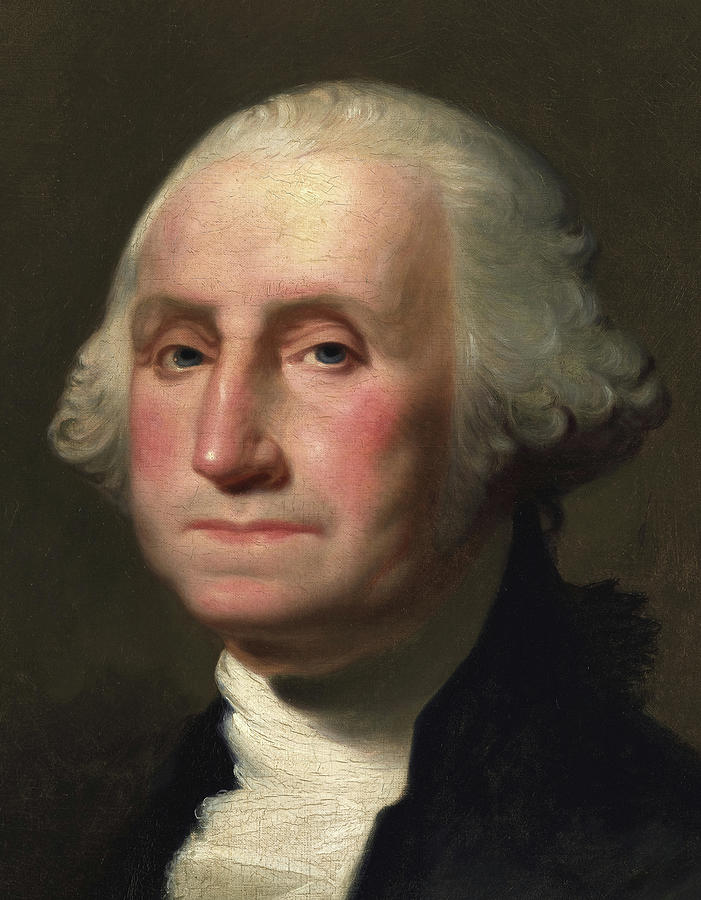

Lydia Field Emmet by William Merritt Chase Lydia Field Emmet by William Merritt Chase, 1892, via Brooklyn Museum, New York City Eakins influenced many of the so-called Ashcan School artists, who applied vigorous realism to 20th-century urban America. It beautifully conveys patience in the older Eakins’s face and control in his hands as he painstakingly practices his craft. One such example is The Writing Master, which depicts Eakins’s father Benjamin, who was a calligrapher. However, they also give humble subjects great dignity. His works are much less flamboyant than other Gilded Age portraits, and they often explore melancholy and isolation.

#Portrait painter of george washington full
Eakins painted portraits and genre scenes full of psychological and visual realism. However, his photographs of nude figures, in particular, can feel uncomfortably voyeuristic. Studying anatomy and drawing from nude models has long been considered essential artistic practice. He spent the rest of his life in obscurity, and widespread interest in his art came only after his death. He was fired from the Academy in 1886 after the then-shocking act of having a class of female students draw a completely nude male form. There, he perpetuated the tradition of drawing from nude models. Upon returning to his native Philadelphia, Eakins began teaching at the Pennsylvania Academy of the Fine Arts in 1876. Eakins was also an early practitioner of photography, although he seems to have considered it a tool, rather than an art form in its own right. In keeping with his French academic training, Eakins had a lifelong commitment to studying anatomy and drawing from the nude. He spent several years in Paris, where he studied at the famous École des Beaux-Arts. Unique among Gilded Age portrait painters, Eakins‘s primary interest was in painting the world exactly as he saw it, both visually and psychologically. Thomas Eakins (1844-1916) was dedicated to the principle of realism in art. The Writing Master by Thomas Eakins The Writing Master by Thomas Eakins, 1882, via Metropolitan Museum of Art, New York City The aesthetic vocabularies of these American portrait painters were much broader and more innovative than they usually get credit for. Most of them experimented with vivid colors and free-flowing brushwork like that of the Impressionists, though they did not share an Impressionist interest in transitory visual effects. Gilded Age portraitists also found inspiration in their French modernist contemporaries Edouard Manet and the Impressionists. These masters’ influences are readily apparent in works like Chase’s portrait of fellow painter James McNeill Whistler above. They studied the Old Masters, particularly great portraitists Anthony Van Dyck, Diego Velasquez, and Frans Hals. Through direct or indirect influence, these four artists shaped subsequent generations of American artists, including many of the avant-garde figures whose reputations later eclipsed them.Īll four trained in Europe, primarily in Paris, where they experienced both European academic naturalism and burgeoning French modernism. Sargent, meanwhile, was one of the most successful international portrait painters of the period. The first three were influential teachers at the Pennsylvania Academy of the Fine Arts.

The four great American portrait painters of the Gilded Age were Thomas Eakins, William Merritt Chase, Cecilia Beaux, and John Singer Sargent. A closer look at the paintings and artists, however, suggests a very different assessment. Their reputation particularly suffered after Modernism came to America at the end of this period. Some later viewers have seen Gilded Age portraits as the shallow reflections of frivolous high society, with little artistic merit.

In Defense of Gilded Age Portraits James Abbott McNeill Whistler by William Merritt Chase, 1885, via Metropolitan Museum of Art, New York City


 0 kommentar(er)
0 kommentar(er)
